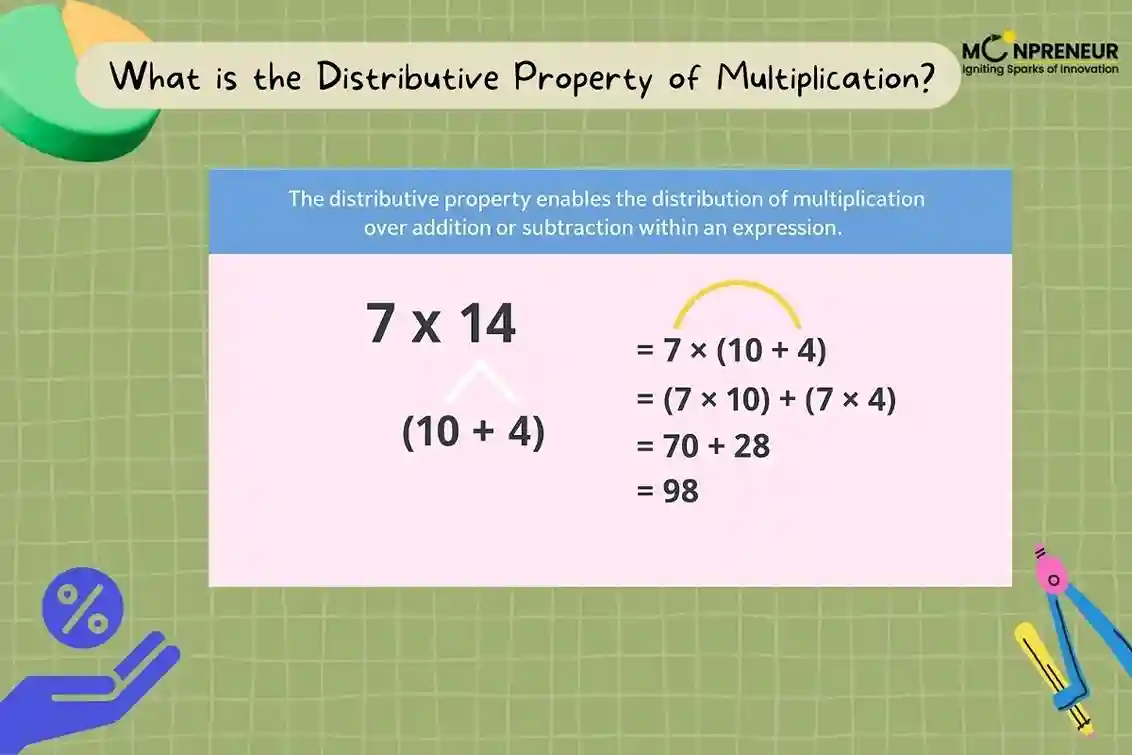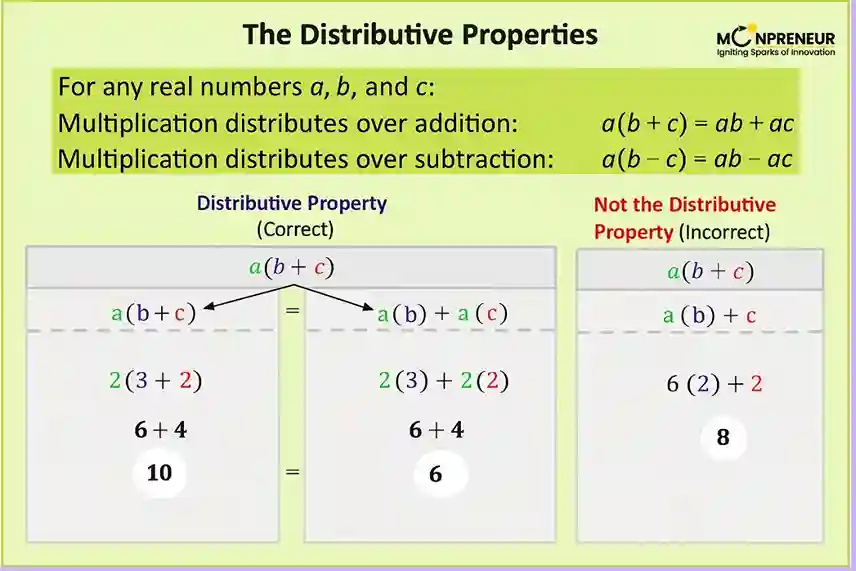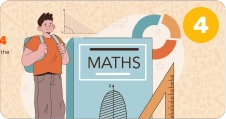Introduction
In mathematics, the Distributive Property of Multiplication is one of the most important properties of numbers. It allows us to simplify and solve expressions by distributing multiplication over addition or subtraction. This property makes calculations easier, especially when working with large numbers, algebraic equations, or mental math.
Definition of Distributive Property

Distributive Property of Multiplication: When a number is multiplied by the sum or difference of two numbers, it can be distributed to each term separately and then added or subtracted.
Mathematically:
\(a \times (b+c) = (a \times b) + (a \times c)\)
\(a \times (b - c) = (a \times b) - (a \times c)\)
This shows that multiplication is distributed over addition and subtraction.
Explanation with Simple Example
Suppose we want to calculate: \(3 \times (4+5)\)
Step 1: Apply distributive property →
\(=(3 \times 4) + (3 \times 5)\)
Step 2: Multiply →
\(= 12 + 15\)
Step 3: Add →
\(= 27\)
This gives the same result as calculating \(3 \times 9 = 27\).
Distributive Property with Subtraction
For subtraction, the property works the same way:
\(6 \times (8 - 2) = (6 \times 8) - (6 \times 2)\)
\(= 48 - 12 = 36\)
Distributive Property with Variables (Algebra)

The distributive property is widely used in algebra.
Example:
If \(2(x+7)\)
\(= (2 \times x) + (2 \times 7) = 2x + 14\)
Real-Life Applications of Distributive Property
Mental Math: Quickly calculate large numbers.(e.g., \(7 \times 48 = 7 \times (50 - 2)\))
Algebra: Simplifies polynomial and linear equations.
Problem Solving: Breaks complex calculations into smaller steps.
Everyday Life: Used in budgeting, shopping discounts, and quick estimates.
Examples of Distributive Property
Example 1
\(5 \times (10+6) = (5 \times 10) + (5 \times 6) = 50 + 30 = 80\)
Example 2
\(12 \times (15 - 3) = (12 \times 15) - (12 \times 3) = 180 - 36 = 144\)
Conclusion
The Distributive Property of Multiplication is a powerful tool in mathematics that makes calculations faster and simpler. By multiplying each term inside parentheses separately and then combining the results, students can handle arithmetic and algebra problems more effectively. Whether in everyday calculations or higher-level math, this property plays a vital role in problem-solving.
Want to spark your child’s interest in math and boost their skills? Moonpreneur’s online math curriculum stands out because it engages kids with hands-on lessons, helps them apply math in real-life situations, and makes learning math exciting!
You can opt for our Advanced Math or Vedic Math+Mental Math courses. Our Math Quiz for grades 3rd, 4th, 5th, and 6th helps in further exciting and engaging in mathematics with hands-on lessons.
Ans: It means multiplying each number inside the bracket separately and then adding or subtracting the results.
Ans: It simplifies complex problems, makes mental math easier, and is essential in solving algebraic equations.
Ans: No, it only applies to multiplication over addition and subtraction, not division.













